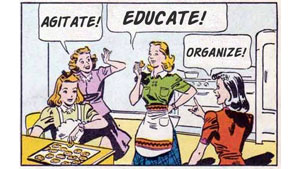
We are currently supporting lots of projects who are aiming to improve services for victims and survivors of violence and abuse - and many of them are using training as a major way of trying to achieve change. Over the years we've done a lot of this ourselves. Back in the 1980s I delivered a regular half-day session on 'Rape: the victim's experience' as part of a course for senior police officers entitled: Advanced Sexual Offences. For all the impact I had on their attitudes I might just as well have stayed at home. And in the decades since Jennie and I have spent hundreds of hours running training for staff in prisons, secure hospitals and mental health services to increase understanding of the impact of violence and abuse in the context of gender inequality. Inevitably such training challenges beliefs, attitudes and values about gender which are fundamental to our identities. It’s sensitive stuff and any training needs to be designed to take potential resistance and conflict into account.
One way to avoid resistance is for training courses to deflect attention away from the social context of violence and abuse, and to address the issues as though they are the same for men and women. This makes training less contentious but means it offering no critique of the systems of power and inequality which are sustained by rape, domestic violence and child sexual abuse.
A more constructive approach is to name the problem and then try and minimise resistance by making the training context as safe as possible for the discussion of difficult matters. To do this, trainers need to be competent, confident, credible and familiar with group and gender dynamics. They need to respond constructively when participants are angry; unwilling to learn or are exercising power in the group.
Training delivered or co-delivered with survivors - with due regard for any needs they may have for support and training - provides participants with important opportunities to listen and learn and when survivors speak authentically about their experiences it can cut through resistance in ways which are hard to achieve in any other way.
However, the key thing about using training to achieve change is that a two-day training course might change a few people's ideas, but it won't change overall practice unless it is part of a broader strategy and there is considerable organisational support for the changes to happen. There needs to be a whole set of building blocks in place including leadership support, practitioners championing change; policies being aligned with the new practices; recording and monitoring of outcomes for service users and a feedback loop so people can see how things are changing.
So the message is: if you want to influence services to do things differently in the gender/abuse arena prepare to meet with plenty of resistance and don't put all your eggs in the training basket.
For more discussion on this topic see the paper by Jennie Williams: Violence and Abuse: Achieving Change through Training
This is one of several resources for projects available on this website: Resources for Lloyds Transform Projects
<< Back to Blogs